#United States Copyright Office
Explore tagged Tumblr posts
Text
Fully AI-Made Art Can't Be Copyrighted, Rules US Judge
For those in the entertainment industry (and creative fields more generally), AI has been an extremely divisive topic. As various websites like ArtStation have decided to basically let art created by the controversial technology persist on their platforms—either freely or with specific guidelines—Hollywood writers and actors are striking in part because they fear how studios could easily use the…
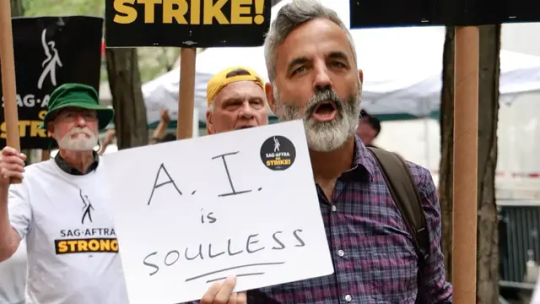
View On WordPress
#Beryl Howell#Copyright#Copyright law#Copyright law of the United States#Culture#Entertainment#Gizmodo#Imagination Engines#Intangible assets#Intellectual property#Stephen Thaler#United States copyright law#United States Copyright Office
1 note
·
View note
Text
We see people grooving to famous songs the moment we enter a club. Without such songs, every party or event seems incomplete. However, are you aware that before playing the famous songs publicly, you need to have all the permissions in place from the makers of such songs? If you fail to do so, you shall end up finding yourself in big trouble like Copyright Infringement. Here in this article, we shall be thoroughly discussing Copyright Protection in the Indian music industry. We shall answer a few questions, including:
How is copyright protection applicable to the music industry?
How can you save yourself from receiving a copyright claim?
Are there provisions in the Indian Copyright Act allowing remixing an old song to a new song?
The term ‘copyright’ combines two words, copy and right; therefore, we can also say that copyright refers to the legitimate and exclusive rights of the individual or entity owning the creative Intellectual Property (IP) assets.
Ian Richard Hargreaves CBE, Emeritus Professor at Cardiff University, Wales, the United Kingdom, has stated that the copyright system can’t be considered appropriate for the present digital age as millions of individuals infringe upon the creative works of others on an everyday basis by simply switching video or audio files from one device to another.
Copyright protection in the music industry gives the producers exclusive legal ownership of creative musical works and recordings. It also includes the exclusive right to distribute, reproduce, and license the copyrighted work to obtain royalties. Kindly note that when lyrics and music are recorded, written on paper, or otherwise placed in a document, the copyright in the creative work is automatically created. The United States Copyright Office has mentioned that once a sound is captured, implying that it must be recorded on a medium that could be sensed, copied, or otherwise transmitted, the master recording is copyright protected in digital tracks, tapes, optical disks, or any other format. However, it is highly advisable to go ahead with copyright registration of your song or musical work. To do the same, you need to ensure that it is tangible, fill out the required copyright application form at the copyright office, and pay the prescribed fee.
Musical Works under the Indian Copyright Act of 1957
Under Section 2(P) of the Indian Copyright Act of 1957 (referred to as Act further in this article), a musical work is defined and is said to include works composed of music containing graphic symbols. An original song is formalized, decorated, modified, and transferred to the original work’s category. You can use sounds to create new musical works by mixing, adding, and deleting some specific aspects of the original song. In India, Bollywood movie songs are loved by everyone. We have listened to the legendary 90s Dheere Dheere Se Meri Zindagi Mein Aana, featuring Rahul Roy and Anu Agarwal, and its remake by Yo Yo Honey Singh. The question that now arises is whether it is legitimate to exploit an artist’s original creative work in this way? In this scenario, the new music or remix is created using audio mixing and adding and subtracting some aspects of the original song.
As per Section 52(1)(j) of the Act, certain uses and modifications of creative works, including sound recordings and music, require obtaining the owner’s consent. It talks about obtaining a legal license to use a copyrighted work in a specific way, provided that the individual or entity (i.e., the licensee) pays the required fee and complies well with the law.
In the case of Gramophone Co v. Super Cassettes, the court held that obtaining the permission of the original owner to use a piece of his creative musical work is necessary. However, in Gramophone Co v. Mars, the court had the opposite opinion. It held that as long as the requirements of Section 52(1)(j) are followed, there might be no instance of copyright infringement and no necessity to obtain the owner’s consent (consent requirement is only for the first recording).
The whole world of music copyright law is undoubtedly complicated; however, it is not that tough to safeguard a piece of musical work and obtain royalties for it. You only need to register your copyright, join the necessary debt collection agency, and pick a distributor. Don’t forget that registering your copyright shall protect your creative work and prevent theft, misuse, and infringement. ✅ For more visit: https://www.kashishipr.com/
#Copyright Protection#Indian Music Industry#Copyright Infringement#Indian Copyright Act#Intellectual Property (IP)#United States Copyright Office#Indian Copyright Act of 1957#cautionary notices#KIPR#ip rights#ip right protection#ip rights management#KashishIPR#intellectual property law#ip attorney#trademark#trademark registration online#register trademark
0 notes
Text
WOMEN TRAILBLAZERS CREATING SUCCESS THROUGH COPYRIGHT.
The Copyright Alliance, in collaboration with the U.S. Copyright Office, the Copyright Society, the Global Innovation Policy Center (GIPC), the U.S. Intellectual Property Alliance, and numerous Volunteer Lawyers for the Arts (VLA) organizations across the country, will host a World Intellectual Property Day (WIPD) 2023 event titled Women Trailblazers Creating Success Through Copyright on Wednesday, April 26 from 2-3:30 p.m. ET. This virtual panel is in keeping with the World Intellectual Property Organization’s (WIPO) 2023 theme, Women and IP: Accelerating Innovation and Creativity. Join us to hear from inspiring women who will discuss how copyright has helped them to advance their careers and protect and distribute their and others’ creative works. Attendees will also learn the steps they can take to forge their own career path by protecting their creativities as well as their livelihoods. Our panel moderator is Karyn A. Temple, Former Register of Copyrights and SEVP & Global General Counsel at the Motion Picture Association; and our panelists are Jayda Imanlihen, Founder of the Black Girl Film School; Alicia Calzada, Deputy General Counsel for the National Press Photographers Association; Tristen Norman, Director, Creative Insights, Getty Images; and Miriam Lord, Associate Register of Copyrights and Director of Public Information and Education at the U.S. Copyright Office. Don’t miss this unique opportunity to gain insights and advice from leading women in the creative and copyright industries. VLA Cohosts: California Lawyers for the Arts Carolina Lawyers for the Arts & Entertainment Chicago Lawyers for the Creative Arts Colorado Attorneys for the Arts Georgia Lawyers for the Arts Maryland Volunteer Lawyers for the Arts New York Volunteer Lawyers for the Arts Oregon Volunteer Lawyers for the Arts St. Louis Volunteer Lawyers and Accountants for the Arts Texas Accountants and Lawyers for the Arts The Ella Project Washington Area Lawyers for the Arts.

#U.S. Copyright Office#Copyright Society#Global Innovation Policy Center (GIPC)#U.S. Intellectual Property Alliance#worldintellectualpropertyday#worldipday#Webinars#26april#united states
0 notes
Text
A Reminder About the Moral Imperative of Pirating Games
Today -- or rather, two days from now in an extraordinary feat of time travel -- the United States Copyright Office ruled (among other things) to uphold the ban against the digital lending of antiquated and abandoned video games by digital library structures; e.g., archive.org or other sites in association with the Video Game History Foundation. This was, no surprise, at the urging of lobbyists from the ESA and other groups who are not in favor of the digital sharing of their works with anyone who has not paid appropriate purchase or licensing fees. The fact that the vast majority of video games ever produced are no longer available for initial purchase from an authorized publisher is not a mitigating consideration.
The sad reality is that regardless of what individual programmers, composers, graphic artists, voice actors or other contributors to a game may feel, most publishers of those games do not view the games as artistic achievements to be shared for posterity so much as competition against their latest offerings. Part of that perception might lie with gamers themselves, who depreciate games rapidly based upon their age, a devaluation that is greatly accelerated over other entertainment media such as movies, television, music and books. It often isn't economically feasible for publishers with the rights to games (for those games whose chain of custody can even be tracked anymore) to port the game to a modern system, as the target audience would be small and what those players will pay is a pittance. Despite its considerable technical achievements and overall coolness, personal favorite Scarabaeus simply isn't going to sell to enough persons to make up the cost of business efforts.
But the alternative shouldn't be to let unused properties rot, either. I have advocated emulation of older games before; indeed, I spent four and a half years doing exactly that to make about 1700 posts about classic arcade, computer and console video games. Generally, I advocate this because as gamers we deserve the breadth of experiences available to us and the only way to achieve that can be the legally dubious route. Now, however, it is clear that without the intervention of gamers as a population, the appreciation of old games will be lost -- as some publishers would like them to be, and that would be a shame.
Though I can't directly link to any site that provides ROMs or disk or tape images of older systems, such things can be very easy to find on Google. The difficulty of emulation varies with the system; many older cartridge-based consoles such as the Atari 2600, NES, SNES and Sega Genesis, are amazingly easy. MAME for arcade games may take a little adjustment for its interface depending on which version you go with. All of these are based on long-since obsolete chip-based ROM storage which was incredibly small. Games of the Fifth Generation of video game consoles (PS1, Sega Saturn, et al) have CDs or larger storage mediums which take a little longer to download and more storage space on your drive. The Commodore 64, Amiga, Apple II and other computer systems have tens of thousands of games -- some of astounding quality -- but most require you to operate the system within the emulator, so that may be a bridge too far. Whatever road you decide to take, good luck and enjoy.
383 notes
·
View notes
Text
(please reblog for sample size im so curious)
From Wikipedia:
According to Slater, in his attempts to get photographs of the monkeys, he found that they were fascinated with the camera and the camera gear and kept playing with it, but they also kept trying to run off with the camera.
Slater further stated that he set the camera's remote shutter trigger next to the camera and, while he held onto the tripod, the monkeys spent 30 minutes looking into the lens and playing with the camera gear, triggering the remote multiple times and capturing many photographs.
In December 2014, the United States Copyright Office stated that works created by a non-human, such as a photograph taken by a monkey, are not copyrightable.
113 notes
·
View notes
Text
"A federal judge has ruled that artwork created solely by artificial intelligence cannot be copyrighted because “human authorship is an essential part of a valid copyright claim.”
The decision, issued by Judge Beryl Howell, stemmed from computer scientist Stephen Thaler’s efforts to copyright an image he said was created by an AI model, identified as Creativity Machine. Thaler claimed that as the owner of Creativity Machine, he was entitled to the copyright. The Copyright Office rejected that application on the grounds that human authorship is necessary to secure a copyright, prompting Thaler to sue.
Howell ultimately upheld the Copyright Office’s decision, citing long-standing precedent about human authorship. “The act of human creation — and how to best encourage human individuals to engage in that creation, and thereby promote science and the useful arts — was thus central to American copyright from its very inception,” Howell wrote. “Non-human actors need no incentivization with the promise of exclusive rights under United States law, and copyright was therefore not designed to reach them.” ...
Howell’s opinion did nod to the drastically shifting landscape of copyright law in the AI era. She even acknowledged Thaller’s own argument about the malleability of copyright law to account for changes in technology. But again, Howell noted that human authorship remained key."
-via Rolling Stone, August 18, 2023
686 notes
·
View notes
Text

This Day In History May 8 1886 American pharmacist John S. Pemberton developed Coca-Cola, a drink he originally billed as a cure-all tonic.
On May 8, 1886, Dr. John Stith Pemberton invented Coca-Cola, forever changing the history of eating habits around the world. The drink’s name refers to two of its original ingredients: coca leaves and kola nuts (a source of caffeine). Since he was a pharmacist from Atlanta he had access to a variety of chemicals and natural ingredients. One day, he prepared a dark coloured liquid and decided to take it to his shop, Jacobs' Pharmacy, to mix it with carbonated water. At this point, a test was needed. So he had the customers of the pharmacy taste it, who greatly appreciated the delicious and refreshing drink. From that day Pemberton put the forerunner of the current Coca-Cola on sale at five cents a glass as a takeaway drink.
The logo as we know it today was invented and designed by Frank M. Robinson, Dr. Pemberton's accountant, who thought that the two Cs would have made a nice advertising logo. The Coca-Cola brand - written in its famous italics font - was born with a first advertising campaign dedicated to the drink appeared in the newspaper The Atlanta Journal, inviting citizens to try this "popular new take-out drink". The advertising campaign for the product launch appeared on the first awnings of the shops, on which the words "Drink Coca-Cola" stood out. But the beginnings were not exciting: in the first year they sold just about nine glasses a day.
In 1887 John Pemberton registered the copyright of Coca-Cola Syrup and Extract with the US Patent Office. A year later, disheartened by the lack of success of his invention and never fully convinced - and aware - of the drink's potential, he gradually sold the company's shares to various partners. Shortly before his death, he sold the rest of Coca-Cola to Asa G. Candler who bought back the shares of other holders until he acquired complete control of the company.
Together with his brother - John S. Candler - Frank Robinson - John Pemberton's former partner - and two other partners, Mr. Candler opened The Coca-Cola Company, with a start-up capital of $100,000. They invested a lot in marketing with free coupons, promotions, souvenir fans, calendars, clocks, cup holders and so on. He did everything to advertise the brand and make it famous. In 1894 the first factory was born, in Dallas, Texas and a year later Candler made a famous announcement: "Today Coca-Cola is drunk in every state and territory of the United States". Under Candler’s leadership, sales rose from about 9,000 gallons of syrup in 1890 to 370,877 gallons in 1900.
61 notes
·
View notes
Text



















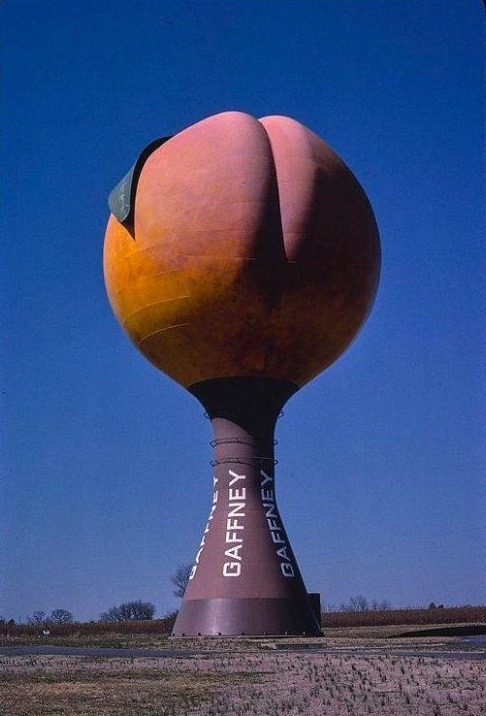


John Margolies (American, 1940-2016)
John Samuel Margolies was an architectural critic, photographer, and author who was noted for celebrating vernacular and novelty architecture in the United States, particularly those designed as roadside attractions. For almost forty years, he documented the most remarkable examples he found, publishing some of his discoveries in books and consigning the rest to an archive, which has now been purchased by the Library of Congress who, in a wonderfully gracious move, have lifted all copyright restrictions on the photographs. (see link below)
Gatorland Zoo alligator statue - Route 1, St. Augustine, Florida - 1979
Deschwanden's Shoe Repair (The Big Shoe) - 10th & Chester, Bakersfield, California - 1977
Wigwam Village #2 - office teepee and several teepee cabins - Route 31W, Cave City, Kentucky - 1979
Wigwam Village #6 - Route 66, Holbrook, Arizona - 1979
Jantzen sign - Stamie's Beachwear - Ocean Avenue, Daytona Beach, Florida - 1990
7-Up Bottling Company (two views) - NE 14 & Sandy Boulevard, Portland, Oregon - 1980
Coca Cola Bottling Company (two views) - 14th & Central Avenue, Los Angeles, California - 1977
Coca Cola Bottling Company (detail view of door) - 14th & Central Avenue, Los Angeles, California - 1977
It'll Do Motel (office) - Jonesborough, Tennessee - 1987
Joy Theater marquee - San Antonio, Texas - 1982
White Castle - Reading Road, Cincinnati, Ohio - 1980
Mammy's Cupboard (two views) - Route 61, Natchez, Mississippi - 1979
Dependable Used Cars sign - Division Street, Grand Rapids, Michigan - 1982
Stan The Tire Man statue - Broadway, Mount Vernon, Illinois - 1988
Bomber gas station - Route 99 E., Milwaukie, Oregon - 1980
World's Largest Redwood Tree Service Station (1936) - Route 101, Ukiah, California - 1991
Peach water tower - Frontage Road, Gaffney, South Carolina - 1988
Christie's Restaurant sign (cowboy shrimp) - Houston, Texas - 1983
Roadside flamingo statue - Frog City, Route 41, Florida - 1980
www.publicdomainreview.org/collection/john-margolies-photographs-of-roadside-america/
addendum: seen (not photographed) in a 2007 trip to Garibaldi/Nehalem/Manzanita Oregon — The Wheeler Inn with a wheelbarrow on the roof with a clothed female mannequin loaded into it . . .
30 notes
·
View notes
Text
US National Priorities for Artificial Intelligence, please help
https://www.whitehouse.gov/wp-content/uploads/2023/05/OSTP-Request-for-Information-National-Priorities-for-Artificial-Intelligence.pdf
Request for Information National Priorities for Artificial Intelligence
AGENCY: Office of Science and Technology Policy (OSTP). ACTION: Notice of Request for Information.
[3270-F1]
SUMMARY: The Biden-Harris Administration is developing a National Artificial Intelligence (AI) Strategy that will chart a path for the United States to harness the benefits and mitigate the risks of AI. This strategy will build on the actions that the Federal Government has already taken to responsibly advance the development and use of AI. To inform this strategy, OSTP requests public comments to help update U.S. national priorities and future actions on AI.
DATES: Interested individuals and organizations are invited to submit comments by 5:00 p.m. ET on July 7, 2023.
ADDRESSES: Comments must be submitted via the Federal eRulemaking Portal at regulations.gov. However, if you require an accommodation or cannot otherwise submit your comments via regulations.gov, please contact the program contact person listed under FOR FURTHER INFORMATION CONTACT. OSTP will not accept comments by fax or by email, or comments submitted after the comment period closes. To ensure that OSTP does not receive duplicate copies, please submit your comments only once. Additionally, please include the Docket ID at the top of your comments.
Federal eRulemaking Portal: Go to www.regulations.gov to submit your comments electronically. Information on how to use www.regulations.gov, including instructions for accessing agency documents, submitting comments, and viewing the docket, is available on the site under “FAQ” (https://www.regulations.gov/faq).
Privacy Note: OSTP’s policy is to make all comments received from members of the public available for public viewing in their entirety on the Federal eRulemaking Portal at www.regulations.gov. Therefore, commenters should be careful to include in their comments only information that they wish to make publicly available. OSTP requests that no proprietary information, copyrighted information, or personally identifiable information be submitted in response to this Request for Information (RFI).
Instructions: Response to this RFI is voluntary. Each responding entity (individual or organization) is requested to submit only one response.
Responses may address one or more topics, as desired, from the enumerated list provided in this RFI. Responders should note the corresponding topic number(s) in their response. Submissions must not exceed 10 pages (exclusive of cover page and references) in 11-point or larger font. Responses should include the name of the person(s) or organization(s) filing the comment, as well as the respondent type (e.g., academic institution, advocacy group, professional society, community-based organization, industry, member of the public, government, other). Comments referencing materials that are not widely published should include copies or electronic links of the referenced materials. No business proprietary information, copyrighted information, or personally identifiable information (aside from that requested above) should be submitted in response to this RFI. Comments submitted in response to this RFI may be posted online or otherwise released publicly.
In accordance with Federal Acquisitions Regulations Systems 15.202(3), responses to this notice are not offers and cannot be accepted by the Federal Government to form a binding contract. Additionally, those submitting responses are solely responsible for all expenses associated with response preparation.
FOR FURTHER INFORMATION CONTACT: For additional information, please direct questions to Nik Marda at [email protected] or 202-456-6121.
SUPPLEMENTARY INFORMATION:
Background: AI has been part of American life for years, and it is one of the most powerful technologies of our generation. The pace of AI innovation is accelerating rapidly, which is creating new applications for AI across society. This presents extraordinary opportunities to improve the lives of the American people and solve some of the toughest global challenges. However, it also poses serious risks to democracy, the economy, national security, civil rights, and society at large. To fully harness the benefits of AI, the United States must mitigate AI’s risks.
The Biden-Harris Administration has already taken significant steps to advance responsible innovation, protect the American people’s rights and safety, and ensure all Americans benefit from AI. The Federal Government funds significant amounts of responsible research in AI, has issued an updated National AI R&D Strategic Plan, and developed a plan to build a National AI Research Resource to ensure that more researchers have access to tools to leverage AI. The Biden-Harris Administration has protected national security and maintained global competitiveness, including by banning exports to the People’s Republic of China of high-end computer chips used to build AI and by developing a strategy for responsible AI in defense. It has laid out a Blueprint for an AI Bill of Rights, an AI Risk Management Framework, provisions across multiple executive orders, and many actions across the Federal Government to promote responsible AI innovation, manage the risks associated with AI, and ensure AI systems are trustworthy and equitable. The Administration has also worked with like-minded partners around the world to assess AI’s implications for the workforce, to advance collaborative AI research and development, and to ensure technology works for democracy.
The Biden-Harris Administration is undertaking a process to ensure a cohesive and comprehensive approach to AI-related risks and opportunities. By developing a National AI Strategy, the Federal Government will provide a whole-of-society approach to AI. The strategy will pay particular attention to recent and projected advances in AI, to make sure that the United States is responsive to the latest opportunities and challenges posed by AI, as well as the global changes that will arrive in the coming years. Through this RFI, OSTP and its National AI Initiative Office seeks information about AI and associated actions related to AI that could inform the development of a National AI Strategy.
OSTP will also draw on public input from ongoing and recent RFIs, including:
OSTP’s RFI to the Update of the National Artificial Intelligence Research and
Development Strategic Plan;
The National Telecommunication and Information Administration’s Request for Comment on AI Accountability Policy;
OSTP’s and the National Science Foundation’s RFI on Implementing Initial Findings and Recommendations of the National Artificial Intelligence Research Resource Task Force;
OSTP’s RFI on Automated Worker Surveillance and Management; and
OSTP’s RFI on Public and Private Sector Uses of Biometric Technologies. If you have already responded to one or more of these RFIs, your prior input will be considered
in the context of developing the National AI Strategy.
Scope: OSTP invites input from any interested stakeholders. OSTP will consider each comment, whether it contains a personal narrative, experiences with AI systems, or technical legal, research, policy, or scientific materials, or other content that meets the instructions for submissions to this RFI.
Information Requested: Respondents may provide information for one or more of the questions listed below, as desired. Note that the list below does not cover some AI topics as completely, such as AI research and development, given ongoing or recent RFIs on those topics.
Protecting rights, safety, and national security:
What specific measures – such as standards, regulations, investments, and improved trust and safety practices – are needed to ensure that AI systems are designed, developed, and deployed in a manner that protects people’s rights and safety? Which specific entities should develop and implement these measures?
How can the principles and practices for identifying and mitigating risks from AI, as outlined in the Blueprint for an AI Bill of Rights and the AI Risk Management Framework, be leveraged most effectively to tackle harms posed by the development and use of specific types of AI systems, such as large language models?
Are there forms of voluntary or mandatory oversight of AI systems that would help mitigate risk? Can inspiration be drawn from analogous or instructive models of risk management in other sectors, such as laws and policies that promote oversight through registration, incentives, certification, or licensing?
What are the national security benefits associated with AI? What can be done to maximize those benefits?
How can AI, including large language models, be used to generate and maintain more secure software and hardware, including software code incorporating best practices in design, coding and post deployment vulnerabilities?
How can AI rapidly identify cyber vulnerabilities in existing critical infrastructure systems and accelerate addressing them?
What are the national security risks associated with AI? What can be done to mitigate these risks?
How does AI affect the United States’ commitment to cut greenhouse gases by 50-52% by 2030, and the Administration’s objective of net-zero greenhouse gas emissions no later than 2050? How does it affect other aspects of environmental quality?
Advancing equity and strengthening civil rights:
What are the opportunities for AI to enhance equity and how can these be fostered? For example, what are the potential benefits for AI in enabling broadened prosperity, expanding economic and educational opportunity, increasing access to services, and advancing civil rights?
What are the unique considerations for understanding the impacts of AI systems on underserved communities and particular groups, such as minors and people with disabilities? Are there additional considerations and safeguards that are important for preventing barriers to using these systems and protecting the rights and safety of these groups?
How can the United States work with international partners, including low- and middle- income countries, to ensure that AI advances democratic values and to ensure that potential harms from AI do not disproportionately fall on global populations that have been historically underserved?
What additional considerations or measures are needed to assure that AI mitigates algorithmic discrimination, advances equal opportunity, and promotes positive outcomes for all, especially when developed and used in specific domains (e.g., in health and human services, in hiring and employment practices, in transportation)?
How might existing laws and policies be updated to account for inequitable impacts from AI systems? For example, how might existing laws and policies be updated to account for the use of generative AI to create and disseminate non-consensual, sexualized content?
Bolstering democracy and civic participation:
How can AI be used to strengthen civic engagement and improve interactions between people and their government?
What are the key challenges posed to democracy by AI systems? How should the United States address the challenges that AI-generated content poses to the information ecosystem, education, electoral process, participatory policymaking, and other key aspects of democracy?
What steps can the United States take to ensure that all individuals are equipped to interact with AI systems in their professional, personal, and civic lives?
Promoting economic growth and good jobs:
What will the principal benefits of AI be for the people of the United States? How can the United States best capture the benefits of AI across the economy, in domains such as education, health, and transportation? How can AI be harnessed to improve consumer access to and reduce costs associated with products and services? How can AI be used to increase competition and lower barriers to entry across the economy?
How can the United States harness AI to improve the productivity and capabilities of American workers, while mitigating harmful impacts on workers?
What specific measures – such as sector-specific policies, standards, and regulations – are needed to promote innovation, economic growth, competition, job creation, and a beneficial integration of advanced AI systems into everyday life for all Americans? Which specific entities should develop and implement these measures?
What are potential harms and tradeoffs that might come from leveraging AI across the economy? How can the United States promote quality of jobs, protect workers, and prepare for labor market disruptions that might arise from the broader deployment of AI in the economy?
What are the global labor force implications of AI across economies, and what role can the United States play in ensuring workforce stability in other nations, including low- and middle-income countries?
What new job opportunities will AI create? What measures should be taken to strengthen the AI workforce, to ensure that Americans from all backgrounds and regions have opportunities to pursue careers in AI, and otherwise to prepare American workers for jobs augmented or affected by AI?
How can the United States ensure adequate competition in the marketplace for advanced AI systems?
Innovating in public services:
How can the Federal Government effectively and responsibly leverage AI to improve Federal services and missions? What are the highest priority and most cost-effective ways to do so?
How can Federal agencies use shared pools of resources, expertise, and lessons learned to better leverage AI in government?
How can the Federal Government work with the private sector to ensure that procured AI systems include protections to safeguard people’s rights and safety?
What unique opportunities and risks would be presented by integrating recent advances in generative AI into Federal Government services and operations?
What can state, Tribal, local, and territorial governments do to effectively and responsibly leverage AI to improve their public services, and what can the Federal Government do to support this work?
Additional input:
29. Do you have any other comments that you would like to provide to inform the National AI Strategy that are not covered by the questions above?
Dated: May 23, 2023 Stacy Murphy, Operations Manager.
215 notes
·
View notes
Note
what were you asking the copyright office about?
The January 1958 issue of Astounding Science Fiction magazine. Which I was already pretty certain was Public Domain, since a shit ton of them from even a decade later are, but I wanted to make sure.
I asked them if they could help since I'd already checked all the copyright books for any possible relevant years that are on the Internet Archive (which officially stores the official books because the US government literally cannot be assed to do it themselveS), and didn't see it listed even once.
For anyone who didn't see the post, I sent them an email on Sept 21. Today I got this response:
We are prohibited from confirming if a certain work is in the public domain. Generally, works published before 1929 are in the public domain.
If this is an important matter, you may want to contact an attorney about your legal options. Also, information about fair use can be found here: U.S. Copyright Office Fair Use Index
Sincerely, CBC
so. the official copyright office of the United States is literally fucking prohibited from telling you if something is public domain or not.
Sarcasm: because our tax dollars can't go to anything that'd actually help anyone, god fucking forbid. No we gotta fund useless shit like this and bomb people overseas
8 notes
·
View notes
Text
This day in history
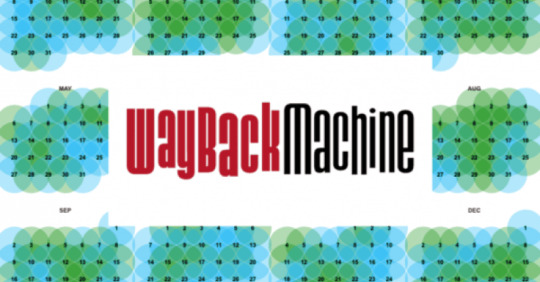
On June 20, I'm keynoting the LOCUS AWARDS in OAKLAND.

#15yrsago Student challenges prof, wins right to post source code he wrote for course https://memex.craphound.com/2009/06/10/student-challenges-prof-wins-right-to-post-source-code-he-wrote-for-course/
#15yrsago France’s three-strikes copyright rule is unconstitutional and hence dead https://www.laquadrature.net/en/2009/06/10/hadopi-is-dead-three-strikes-killed-by-highest-court/
#15yrsago The Brain that Changes Itself: hopeful book on the science of neuroplasticity https://memex.craphound.com/2009/06/10/the-brain-that-changes-itself-hopeful-book-on-the-science-of-neuroplasticity/
#10yrsago National anti-censorship orgs protest cancellation of Little Brother summer reading program https://ncac.org/incident/little-brother-pensacola
#10yrsago Piketty’s inherited-wealth dystopia: private capital millionaires multiply https://www.bbc.com/news/business-27774753
#10yrsago How Heinlein went from socialist to right-wing libertarian https://newrepublic.com/article/118048/william-pattersons-robert-heinlein-biography-hagiography
#10yrsago Whistleblower org says it will go to jail rather than turning over its keys https://arstechnica.com/tech-policy/2014/06/to-defeat-encryption-feds-deploy-the-subpoena/
#10yrsago Texas school bans sunscreen because a child might drink it https://web.archive.org/web/20140608074518/http://www.keyetv.com/news/features/top-stories/stories/san-antonioarea-school-district-do-not-bring-sunscreen-school-18590.shtml
#10yrsago Small town sheriff buys tank: “the United States of America has become a war zone” https://www.indystar.com/story/news/2014/06/07/police-officer-safety-surplus-zeal-military-equipment-spurs-debate-mrap-military-vehicle/10170225/
#5yrsago A grandmother is suing the TSA for strip searching her to get a look at her panty liner, on Mother’s Day https://professional-troublemaker.com/2019/06/06/tsa-strip-searches-grandmother-on-mothers-day-for-over-feminine-hygiene-product-gets-sued/
#5yrsago A trove of leaks show that Brazil’s “anti-corruption” task force was secretly trying to oust Lula and install a far-right strongman https://theintercept.com/2019/06/09/brazil-archive-operation-car-wash/
#5yrsago Americans are too poor to survive whether or not they’re working https://eand.co/half-of-americans-are-effectively-poor-now-what-the-c944c518db6a
#5yrsago Competition can fix Big Tech, but only if we don’t make “bigness” a legal requirement https://www.economist.com/open-future/2019/06/06/regulating-big-tech-makes-them-stronger-so-they-need-competition-instead?fsrc=gp_en?fsrc=scn/tw/te/bl/ed/regulatingbigtechmakesthemstrongersotheyneedcompetitioninsteadopenvoices
#5yrsago Weekend SIM-swapping blitz targets US cryptocurrency holders https://www.zdnet.com/article/wave-of-sim-swapping-attacks-hit-us-cryptocurrency-users/
#5yrsago The NRA begs gun nuts for donations, spends lavishly on its board of directors and execs https://www.washingtonpost.com/investigations/nra-money-flowed-to-board-members-amid-allegedly-lavish-spending-by-top-officials-and-vendors/2019/06/09/3eafe160-8186-11e9-9a67-a687ca99fb3d_story.html
#5yrsago On Grenfell’s second anniversary, 60,000 Britons are still living in firetraps clad in the same deadly, decorative materials https://www.independent.co.uk/news/uk/politics/grenfell-tower-fire-material-high-rise-buildings-flat-block-a8946276.html
#1yrago Links, dumped https://pluralistic.net/2023/06/10/in-the-dumps-2/#do-the-humpty-dump
13 notes
·
View notes
Text
I spent 6 grueling hours researching how to protect one's photos/scans so you wouldn't have to--And these are my findings:
As the title states, I spent 6 grueling hours researching how to protect one's photos/scans in case other collectors want to protect and/or receive credit for their photos.
Once more let me emphasize THEIR PHOTOS.
Backstory:
It's not a secret that I'm quite a big collector of official Spy x Family merchandise, specifically clear file folders, stationery, and acrylic stands. I own so much, in fact, I have a tendency to own a handful of duplicates and had the crazy idea to start a small business selling these duplicates via Ko-Fi. A thought came to me that since I had already invested in a light box and a scanner for selling my merch, why not also use them to share pictures of my collection for other fans to view and appreciate?
And that was when I had sought the opinions from my good friend, @yumeka-sxf. Yumeka has been kindly posting high-resolution scans of her SxF merch (clear files, pages, etc.) on Tumblr. She is someone I also deemed as an expert when it came to uploading merch on the internet. She gave me incredible advice with awesome foresight when it came to watermarking high-resolution pictures and scans. She easily predicted what disrespectful people would do if I hadn't moved my watermarks to certain (albeit not really appealing) spots. And, just like she said, someone did attempt to remove my watermark using AI. You can read about it here. @yumeka-sxf also provided her own insight to watermarking merch here--if ya'll are interested to read.
I won't go into too much detail, but essentially they're long posts meant to educate people on why fans, who own the official merch, put watermarks on their pictures. The bottom line is, we're claiming the picture for ownership, NOT the merch.
Second, did you know that people have found ways to remove watermarks?

That gives me enough incentive as to why I want to take it a step further to protect my photos/scans.
"If I take a picture of something do I own the picture that I took?":
Yes and no. Yes as in, the picture is yours. No, because depending on your subject, it falls under numerous jurisdictions of copyright. You can find all the details in this insightful post from veteran photographers.
But since we're focusing on the topic of photos and scans of merchandise, I'd like to provide these screenshots:



And so, to re-iterate, the only thing you'll get out of copyrighting your photo is just the right to the photo--which is all I want.
The Findings:
6 grueling hours of research for protecting one's picture led me to several insightful directions--one of them amusingly brought me down a rabbit hole of how to protect one's real estate pictures. They did have some wonderful tips if you guys would like to read them!
Unfortunately, I do not own Photoshop so I could not make any edits on the metadata or create a layer that will prevent downloading the content of the picture. Preventing screenshots/right-clicking is limited to control on a website and/or can easily be canceled by plug-ins. So that just leaves me with finding something creative solutions the only tool I have: Canva (more on this later).
I spent some more time reading more journals and visited USCO (United States Copyright Office) and, finally, Pixsy.
I'm gonna be honest, USCO is THE BEST way to protect your media (merchandise, art, etc.) IF you have the money to support it.
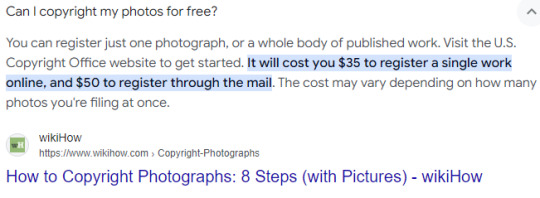

Not only do I not have the funding for this type of service, but my photos don't exactly meet "originality" especially when the subject of the photo is copyright-protected merchandise, which means there are severe punishments for those who pursue any commercial purposes (such as selling my photos to make money rather than directing people to purchase the official work from the licensing site). And at the end of the day, I just care about the photo, itself, and receiving credit and source.
It's ridiculously simple to just credit and source a picture, and yet, it'll surprise you how many people just can't do that. This is why, I must take these extra precautions to ensure credit and sourcing.
So, I opted for Pixsy for its free plan that includes 500 images being monitored.

There's no doubt that I'll most likely invest in a monthly subscription if ever I amass beyond 500 pictures for monitoring.
Currently, it has already done an impressive job of identifying pictures I've posted with my watermarks on Ko-Fi, Twitter, and Tumblr. It has even identified reblogs/retweets.


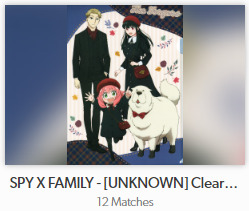
For some odd reason, it uploads my pictures horizontally when it's normally vertical ^^; but it still gets the job done. Interestingly, it hasn't picked up my pictures from Mercari yet. I assume that if I were to upgrade to the subscription plan, Pixsy might be able to find it by then.
Procedures:
I'm sharing my procedures for protecting one's photo (and content, if applicable of course).
Step 1: Register on Pixsy. As I've addressed earlier, it's free.
Step 2: Upload HIGH-RESOLUTION pictures (no watermark) to Pixsy's database. This is probably the most accurate way for Pixsy to identify pictures of the same (or similar) "blueprint". In the picture below, I provided a screenshot of my picture without the watermark (left) with a picture they found of my picture with my watermark on it from my ko-fi shop (right).

Step 3: If you plan to upload a photo/scan with or without watermark, it is recommended to upload your image at 550 pixel image and at 72 dpi. This makes it good for the internet (see first image below). But once you zoom in, you can tell the difference in quality (see second image below).


I mentioned before that I don't have photoshop, so I experimented with what I do have: Canva.
Since I have a premium membership (indicated by crown icons), I just use the following settings:
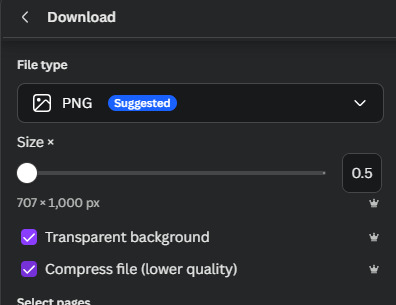
and it gets the job done.
I am planning to upload my photos without watermarks to the Spy x Family wiki quite soon, so I did all this research to prepare for possible theft and/or the lack of crediting and sourcing--just in case. A friend of mine told me that s/he can try to ensure crediting through the file name, which is a ridiculously kind gesture, but I'm not ignorant of people who change/completely ignore file names. That's unfortunately just the way it is on the internet.

Hopefully, I've curated enough research to help protect photos/scans from possible theft (if reposting is not allowed by the owner).
I don't mind if my photos are used for reference AS LONG AS they credit me and link the source directly to the image itself (not one of those cut-corner kind of way and just link my Ko-Fi gallery). I won't tolerate laziness when it comes to sourcing considering I invested a lot of money to purchase merch and invested hours--even days--to get the best photo/scan + researched information on the merch for public access.
#a long post#how to protect photos#how to protect scans#how to use pixsy#how to copyright photos#how to copyright scans#how to copyright merch#a post for merch collectors#merch collectors#photographing merch#scanning merch#scarlymadeathing#scarlydidathing#spy x family#type a shit#I know I've got organizing issues#collector work#acrhiving work
8 notes
·
View notes
Text
How A Monkey, PETA, And Wikipedia May Have Saved Us All From AI Art

See that glorious monkey right there? That is Naruto the macaque, the hero that might have saved us all. That photo comes from a man named David Slater, or more importantly, was taken by Naruto using his equipment. Recently, a comic using AI-generated art was determined intelligible for copyright protection. The reason why? Copyrighted works must be created by humans to gain official copyright protection. Wanna know the legal precedent for that? Read on!
This all comes from a lawsuit that David Slater filed trying to get Wikipedia to remove the pictures from its Wikimedia Commons image library because the picture was made by a non-human, incapable of holding copyright. Therefore, the picture was technically in the public domain. The United States Copyright Office confirmed this as true in 2014. Well, this is when PETA comes into play. They decided to sue to David Slater himself as he published the pictures in a book, stating that the monkies should be able to hold their own copyright of the work, they did take the pictures after all! The original case was dismissed, but PETA brought it up to an appeals court. Despite the two parties deciding some of the money should be donated to help the monkies that he made from his work, the court of appeals declined to dismiss the appeal and declined to vacate the lower court judgment.

So in April 2018, it was made clear that animals cannot hold copyrights. Essentially, non-humans cannot hold copyrights. While arguments were made way back when Wikipedia was tussling legally with David Slater that a significant amount of human influence on art could maybe count, like giving the monkies the camera, it seemed proven in court it didn't. So no, typing in prompts into a non-human AI isn't enough to actually be considered as creating something yourself, at least not legally. Sorry not sorry AI art fans!
#ai art generation#ai art discussion#ai art discourse#ai art is not art#ai art theft#PETA#macaque#monkey#ai art is stupid and I'm so happy a literal monkey saved us all#Naruto
166 notes
·
View notes
Text

Burritt's Constellation Atlas of the Northern hemisphere, 1856
Fasciculus: 1856 Burritt - Huntington Map of the Constellations of the Northern Hemisphere
Rare hand colored map engraved by W. G. Evans of New York for Burritt’s 1856 edition. Constellations are drawn in detail and include depictions of the Zodiacal figures the stars are said to represent. Chart is quartered by lines indicating the Solstitial and Equinoctial Colures and Includes Ursa Major (Great Bear or Big Dipper), Usra Minor (the Little Bear or Little Dipper), Draco (the Dragono), Cassiopeia (the W), Perseus, Camelopardalis, and Cepheus. .
Like all of Burritt’s charts, is based on the celestial cartographic work of Pardies and Doppelmayr. Dated and copyrighted: “Entered according to Act of Congress in the year 1856 by F. J. Huntington in the Clerks Office of the District Court of the United States in the Southern District of N. York. Datum 1856
https://la.m.wikipedia.org/wiki/Fasciculus:1856_Burritt_-Huntington_Map_of_the_Stars%5E_Constellations_of_the_Northern_Hemisphere_-Geographicus-_ConstNorth-burritt-1856.jpg
9 notes
·
View notes
Text
Screw people who are against archives and preservation for games and media in general so much.
The US Copyright Office announced today that they would not grant a new exemption in the Digital Millennium Copyright Act (DMCA) in support of video game preservation. (see p.29) For the past three years, the Video Game History Foundation has been supporting with the Software Preservation Network (SPN) on a petition to allow libraries and archives to remotely share digital access to out-of-print video games in their collections. Under the current anti-circumvention rules in Section 1201 of the DMCA, libraries and archives are unable to break copy protection on games in order to make them remotely accessible to researchers. While we are disappointed by the Copyright Office’s decision (see p. 191 of the Register’s Recommendation), we have no regrets about going through this process. Over the last three years, working on the petition has helped us generate important research, notably our Survey of the Video Game Reissue Market in the United States report, which proved that around 87 percent of video games released in the United States before 2010 remain out of print. Our combined efforts with SPN have raised significant public awareness of these issues and have already made an impact throughout the game industry and preservation communities. Unfortunately, lobbying efforts by rightsholder groups continue to hold back progress. During our hearing with the Copyright Office, the Entertainment Software Association (ESA) declared that they would never support remote game access for research purposes under any conditions. The game industry’s absolutist position—which the ESA’s own members have declined to go on the record to support—forces researchers to explore extra-legal methods to access the vast majority of out-of-print video games that are otherwise unavailable. We’re not done fighting here. We will continue our advocacy for greater access and legal allowances for video game preservation and working with members of the game industry to increase internal awareness around these issues. We encourage members of the game industry who are disappointed by the Copyright Office’s decision to ask their leadership to push for greater support for the work of libraries and archives within their industry groups.
3 notes
·
View notes